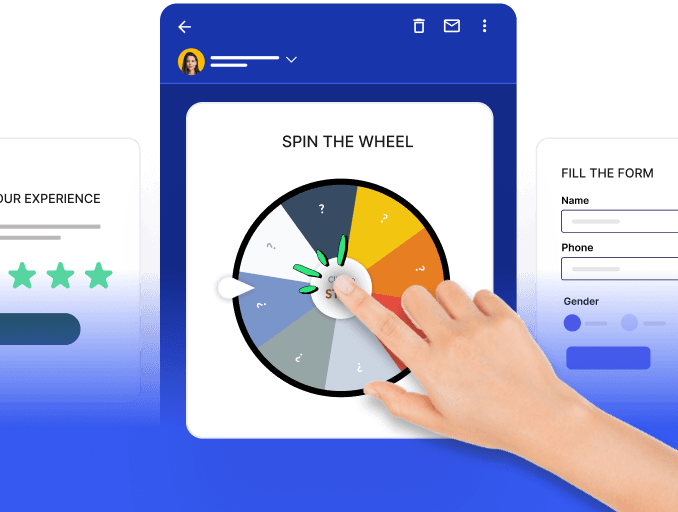If you've ever wondered how the big players in the business stay ahead of the curve, the secret might just be in their pricing strategy. Dynamic pricing has become the not-so-secret weapon for top brands, allowing them to adapt swiftly to market changes, maximize profits, and keep the competition on their toes.
In this blog, we will explore six dynamic pricing examples from different industries, highlighting how brands successfully implement this pricing strategy to boost sales, enhance customer satisfaction, and increase profitability.
Table of contents
What is dynamic pricing?
Dynamic pricing enables businesses to adjust prices dynamically based on various factors, including market demand, competitor pricing, time of day, customer behavior, and even external factors, like weather conditions, to determine the right price point for a product or service.
Implementing this strategy can significantly impact profitability. According to Harvard Business Review, a 1% improvement in price optimization led to an 11.1% increase in total profits. Additionally, unlike traditional fixed pricing models, dynamic pricing enables businesses to stay agile and respond effectively to market changes and optimize their profits.
Example 1: Amazon

Amazon, as a renowned leader in the retail industry, has strategically embraced dynamic pricing to thrive in the competitive ecommerce landscape. This approach isn't just about adjusting different prices; it's about delivering maximum value to the target market while staying agile in response to market shifts. Here's a closer look at how Amazon implements this pricing strategy and the valuable insights we can glean from it.
How Amazon implements dynamic pricing
Amazon's dynamic pricing strategy is driven by real-time market data and customer behavior analysis. It includes frequent price changes to stay competitive, matching, or beating competitor prices. This strategy also helps manage inventory levels and increase ecommerce sales during peak periods with time-limited deals and personalized discounts.
By tailoring prices based on individual customer data, including preferences, browsing history, and purchase behavior, Amazon ensures that each customer receives offers tailored to their needs and interests. This level of ecommerce personalization not only boosts sales but also enhances customer satisfaction and loyalty, making it a crucial strategy for businesses looking to thrive in competitive markets.
Key learnings
Here are some key insights gained from Amazon's dynamic pricing practices:
- Pricing potential: Embracing dynamic pricing promises substantial revenue gains by tapping into real-time market data and customer behaviors.
- Data-driven insights: Deep pricing analysis equips businesses with invaluable pricing patterns, customer preferences, and market trends knowledge, driving smarter pricing decisions.
- Tailored approach: Offering personalized discounts by reviewing your customer base and creating buyer personas can help you determine pricing and tailor offers to specific segments leading to repeat purchases and increased revenue.
- Seasonal strategy: Implementing a dynamic pricing strategy through seasonal sales and events ensures profitability amidst heightened demand, and the ability to seize market opportunities effectively.
- Continuous improvement: Continuous innovation in pricing through experimentation and optimization helps businesses refine tactics and maintain a competitive pricing strategy.
Example 2: MediaMarkt

MediaMarkt, a leading electronics retailer known for its wide range of products and competitive prices, implements dynamic pricing strategies to enhance customer experience and maximize revenue.
How MediaMarkt implements dynamic pricing
At MediaMarkt, dynamic pricing is a strategic masterpiece. Through clever product bundling, enticing flash sales, and savvy seasonal promotions like Black Friday extravaganzas, they keep prices fluid to match customer desires and market trends.
With personalized discounts based on your shopping history and real-time price matching to beat competitors, MediaMarkt ensures you get the best deals while maximizing their revenue. It's a win-win strategy that keeps customers happy and the business thriving.
Key learnings
Here are some key insights gained from MediaMakrt’s dynamic pricing practices:
- Strategic product bundling: Bundle pricing enhances value and boosts sales by strategically bundling products to attract customers, increase the average order value, improve the shopping experience, and stand out from competitors.
- Flash sales and seasonal promotions: Leveraging flash sales and seasonal promotions can create excitement and drive sales. Learning to time promotions strategically can also boost revenue and customer engagement.
- Fluid pricing to match market trends: Keeping prices fluid and responsive to market trends allows businesses to stay competitive and meet customer desires effectively.
- Real-time price matching: Implementing real-time price matching strategies helps businesses stay competitive and attract price-sensitive customers without compromising profitability.
Example 3: Uber

The ride-hailing industry has revolutionized transportation, and Uber is a prime example of a brand that effectively utilizes dynamic pricing to optimize its revenue and pricing strategy. Let's explore how Uber implements this strategy to enhance its business model and customer experience.
How Uber implements dynamic pricing
Uber's dynamic pricing, seen through surge pricing, adjusts ride prices based on demand surges. This algorithm considers supply-demand imbalances, driver availability, and customer demand patterns, ensuring quick rides during peak times. Surge pricing balances supply and demand, enhancing service availability and satisfaction.
Surge zones, like city centers during rush hour, are identified as high-demand areas. Real-time pricing further optimizes prices based on traffic and customer demand, benefiting both riders and drivers. This strategy has been key to Uber's success, adapting to market changes and enhancing customer satisfaction.
Key learnings
Here are some key learnings from Uber's pricing strategy :
- Market share expansion: Dynamic pricing attracts new customers during high-demand periods, expanding market share.
- Revenue maximization: By pricing products or services optimally based on demand fluctuations and customer behavior, businesses can capitalize on opportunities to generate higher profits.
- Customer retention: Dynamic pricing allows businesses to offer fair and attractive pricing, enhancing customer satisfaction and increasing the likelihood of repeat purchases and long-term relationships.
- Transparency and communication: Businesses that are transparent about their dynamic pricing strategies, including the factors that influence price adjustments, can build trust with customers and mitigate concerns about purchase price fluctuations.
- Customer acceptance: As customers experience the benefits of dynamic pricing, such as competitive prices, personalized offers, and availability during high-demand times, they are more likely to accept and appreciate this pricing strategy. This acceptance contributes to a positive customer experience and strengthens customer relationships over time
Example 4: Airbnb

Airbnb, a leading online marketplace for accommodations, employs dynamic pricing strategies to enhance its pricing methods and cater to diverse customer preferences in the competitive hospitality industry. Let's delve into how Airbnb applies this strategy to optimize prices and improve its business model.
How Airbnb implements dynamic pricing
Airbnb's dynamic pricing adapts to market demand, seasons, and preferences, optimizing revenue for hosts. Analysis of location, property type, amenities, and demand shapes prices dynamically, maximizing bookings and revenue.
Airbnb also employs price discrimination, tailoring prices through customer segmentation like business travelers or families, attracting a diverse customer base. Hosts benefit from tools like Smart Pricing for automatic adjustments or manual control for personalized strategies.
With dynamic pricing, hosts seize high-demand periods for higher rates and offer competitive prices during low-demand times, optimizing occupancy.
Key learnings
Here are some important takeaways from Airbnb's pricing practices:
- Data-driven insights: Analyzing location, property type, and demand shapes prices dynamically, optimizing bookings and revenue.
- Targeted pricing: Tailoring prices for different customer segments attracts a diverse base and boosts revenue potential.
- Leveraging effective tools: Utilizing tools like Smart Pricing empowers hosts to automate adjustments or take manual control, ensuring personalized pricing strategies that drive results.
- Occupancy optimization: Hosts can maximize occupancy by adjusting rates based on demand, ensuring competitive prices during low-demand periods and higher rates during high-demand times.
Example 5: Starbucks

Starbucks, a global coffeehouse chain, effectively incorporates dynamic pricing strategies in the food and beverage industry. Let's explore how Starbucks utilizes this effective pricing strategy to optimize prices, attract customers, and enhance its revenue.
How Starbucks implements dynamic pricing
Starbucks has mastered the art of premium pricing, strategically positioning itself as a high-quality coffee brand that caters to customers valuing exceptional experiences. It strategically adjusts the best price based on location, time, and demand.
Their targeted price increases, framed as minor adjustments, capture maximum revenue from less price-sensitive customers while maintaining positive customer perception. By nudging customers towards higher-margin options and leveraging psychological pricing techniques, such as pricing slightly below whole numbers, creates a perception of affordability and drives customer purchase behavior.
In essence, Starbucks' pricing strategy isn't just about setting product prices—it's about crafting a compelling narrative of value and experience that keeps customers coming back for more.
Key learnings
Here are some key lessons from Starbucks' pricing practices:
- Understand customer segments: Analyze customer sensitivity to pricing and adjust strategies to capture the maximum amount customers are willing to pay.
- Communicate price increases effectively: Justify price changes (High price or low price) with market factors and communicate them transparently to maintain customer trust and acceptance.
- Product differentiation and tiered pricing: Offer existing and new products with varying features and prices to guide customers towards higher-margin options, optimizing revenue.
- Strategic pricing adjustments: Focus on increasing prices for lower-margin products or specific offerings to encourage customers to opt for more profitable alternatives, enhancing overall cash flow.
Example 6: Delta Airlines

Delta Airlines, a major player in the airline industry, effectively employs dynamic pricing to optimize its pricing strategies. Let's explore how Delta Airlines utilizes dynamic pricing methods to enhance its pricing structure, maximize revenue, and provide value.
How Delta Airlines implements dynamic pricing
For Delta Airlines utilizes a sophisticated dynamic pricing algorithm to analyze market demand, ensuring optimal revenue generation and high seat occupancy rates. It continuously refines its dynamic pricing strategies based on key performance metrics such as load factor, revenue per available seat mile (RASM), and yield management. Their tiered pricing structures incentivize early booking with lower prices while capitalizing on last-minute travelers willing to pay a higher price or a premium price. This approach maximizes revenue and seat utilization.
During peak seasons and events, Delta employs dynamic pricing to increase ticket prices, taking advantage of travelers' willingness to pay more. This agile pricing strategy also allows Delta to respond swiftly to market changes, ensuring competitiveness and market share capture.
Key learnings
Here are some key learnings from Delta Airlines' pricing model:
- Yield management: Dynamic pricing maximizes profit through yield management, which involves adjusting prices based on factors like customer behavior, peak seasons, and market demand.
- Supply-demand balance: Implement dynamic pricing to optimize seat occupancy rates, ensuring maximum revenue while minimizing unsold seats.
- Personalized offers: Tailor pricing strategies to different customer segments, fostering loyalty and unlocking untapped revenue potential from diverse demographics like frequent flyers and students.
- Flexible price ranges: Emphasize flexibility in pricing to cater to target customers at various price points, attracting a broad customer base while staying competitive in fluctuating market conditions.
- Data-driven decisions: Leverage real-time data analytics for informed pricing decisions, enabling agile responses to market shifts and capitalizing on peak periods for increased revenue agility.
Conclusion
Dynamic pricing, one of the common pricing strategies used by all the above industries, is a strategic tool embraced by leading brands across diverse sectors to optimize profitability and enhance customer experience. By understanding the principles behind dynamic pricing and observing its successful implementations in various industries, you can tailor the pricing models of your products for increased competitiveness and consumer engagement. In essence, Dynamic pricing can be one of the best pricing strategies for businesses who are not only optimize profit margin but also draw in new customers, shaping the foundation of your business success.







